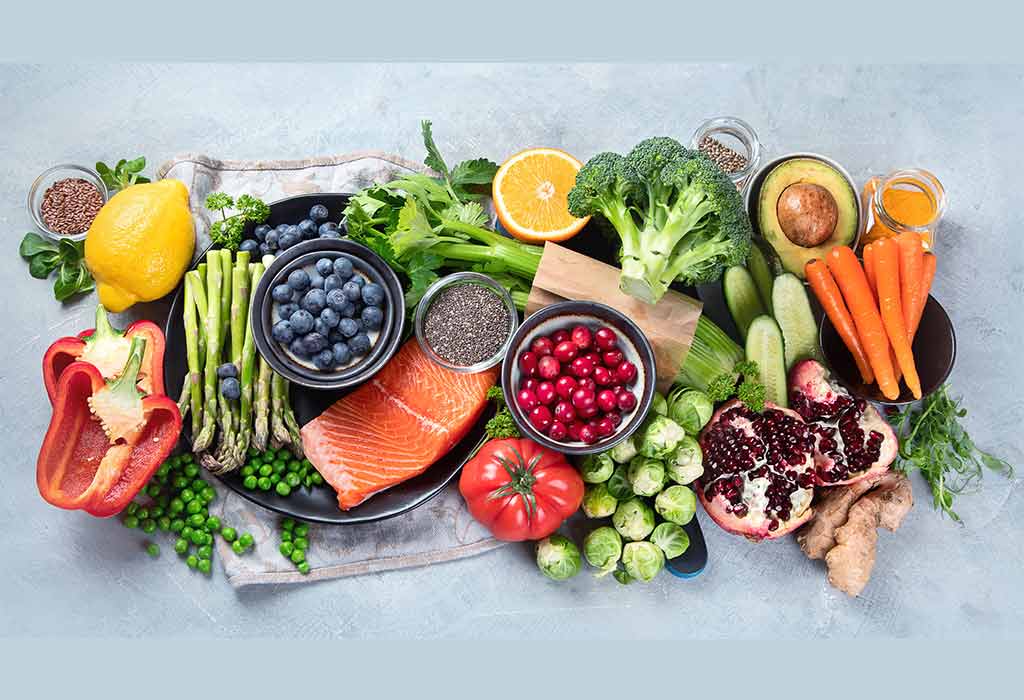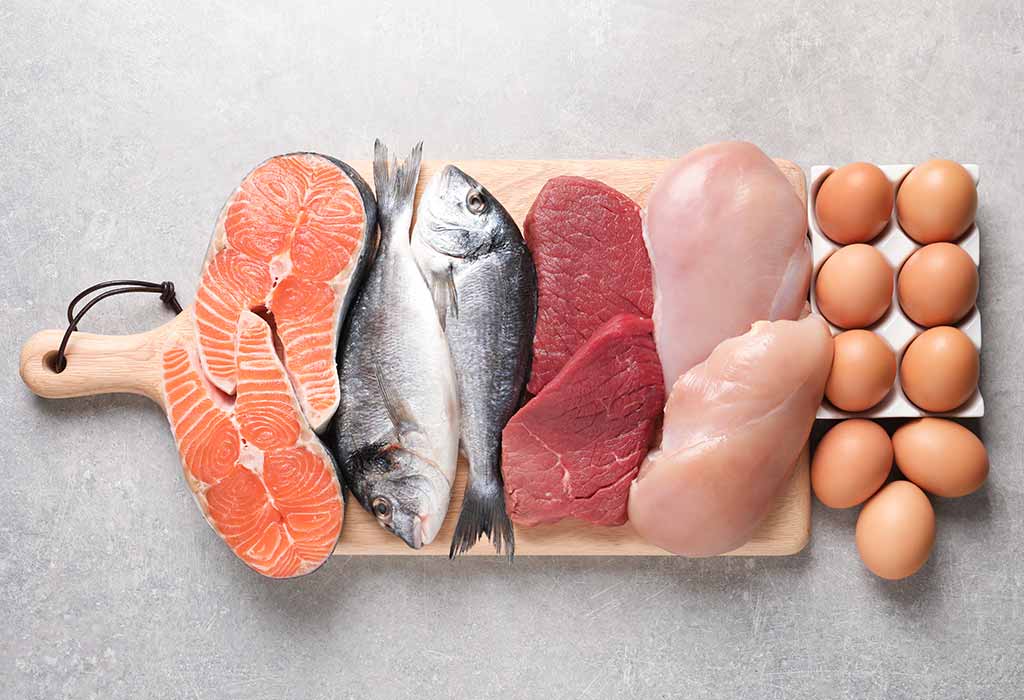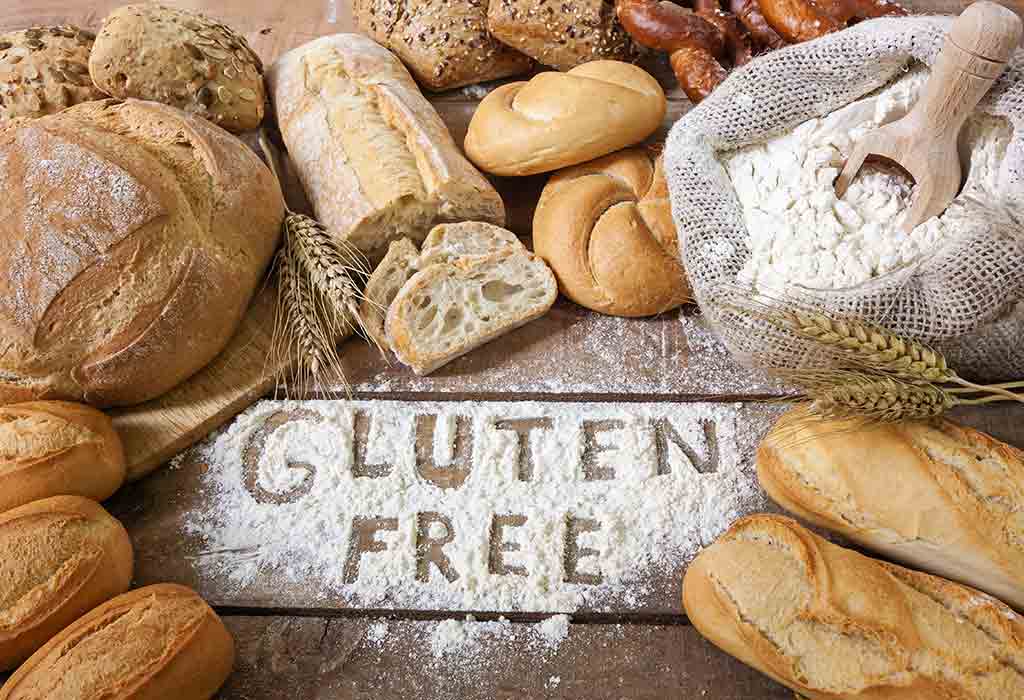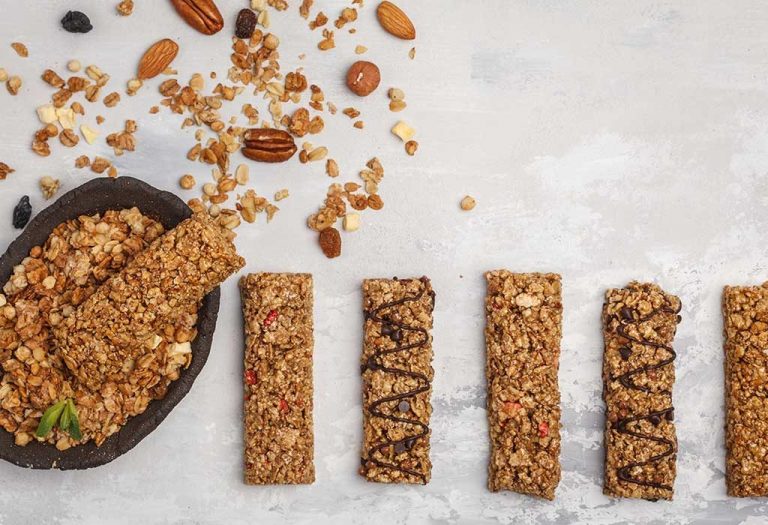Autism Diet for Kids – Foods to Eat & Avoid
Autism and diet are connected—certain foods can affect mood and behavior. Children diagnosed with ASD are known to have feeding problems when compared to other children. In regard to diet for autistic children, studies suggest that children not only have additional feeding issues but also eat a narrower range of given foods (1). This pickiness may further become restrictive and carry on well beyond early childhood timeframes. Several parents with children on the Autistic Spectrum tend to struggle with their child’s food intake and have little or no professional help. This article attempts to talk about an Autism diet, to present foods that are safe for such children and also helps parents understand what to avoid if they have a sensitive eater at home.
Common Diet Concerns of Autistic Kids
Children with ASD have narrow and obsessive interests with repetitive behaviour that, when shown towards food, could lead to some health concerns (2):
- Strong Dislikes and Limited Preferences of Foods: Children with ASD could be very sensitive to textures, colours, smells, and tastes of food. This makes them reject several foods and food groups. They take special offence to soft, slimy foods, fruits, and certain vegetables.
- Constipation: A common problem with children having ASD is that their limited food choices do not provide sufficient dietary fibre. This causes mild to severe constipation in autistic children.
- Not Consuming a Sufficient Quantity of Food: Children with ASD end up having a very small intake of food because of their inability to focus on the same task for long time periods. Also, their dislike of several foods leaves very little that they want to eat.
- The Medication Caused Appetite Loss: Certain drugs used for autistic intervention may cause a loss of appetite and impact growth. Others may impact the absorption of micronutrients or increase the appetite. Consult a physician or dietician to understand the side effects of medication that your child might be taking.
Tips to Deal With Selective Eating in Children With Autism
The care given to a child with ASD has to be exceptional with regard to their food intake. It can be challenging when their options are limited. Making your child try new options can be difficult, and some workarounds need to be incorporated (3):
- Maintain a food diary by keeping notes on everything your child eats, along with the symptoms he is displaying and the behaviour that he is exhibiting. You will see an emerging pattern after he eats certain foods like bread, milk, or cheese.
- Make sure that meals are given in the same place and at the same time on all days. Sensory additions can be tried away from the dining table. For example, take your child to the market and allow them to choose colours, textures, and fragrances that appeal to them before presenting them with the food at the table.
- Reduce their anxiety by providing visual charts about what will be eaten, when it is to be eaten, and what behaviour is acceptable at mealtimes.
- Remember that if you are making your child try out new foods, be patient and caring, not controlling.
- Ensure comfort and safety in the eating environment to encourage sitting through the meal.
- Playing videos, music, or television works for some children, while it is a deterrent for other kids. Understand your child’s psyche and work accordingly.
- Never assume things about your child (that he will surely fuss in a new environment, he will certainly refuse new foods, or he will automatically reject certain textures. Trying at every level is important if you want to expand the foods your child includes in his ‘will eat’ list.
- Introduce foods that can be adapted to your child’s liking in terms of texture and taste.
Diet Tips for Autism
Data suggest that children with ASD have a ‘leaky’ gut where their intestines are more porous than other people. This can lead to difficulty in digesting casein or gluten leaking into the intestines, thereby causing cognitive and behavioural challenges. Some autism nutrition diet tips to help autistic children are (4):
1. GFCF or Gluten-Free/Casein-Free Diet
This is a popular dietary intervention because a leaky gut mainly leaks undigested gluten and casein. The gluten-free diet for children with autism involves avoiding wheat products, dairy products and any processed food that contains either casein or gluten (5).
2. Excluding Phenolic Compounds
It is theorized that certain children with autism or ASD may have impaired levels of certain enzymes that are essential to breaking down phenolic compounds and salicylates. Salicylates cannot, however, be completely avoided as vegetables are rich in this compound, and completely cutting down on fruits and vegetables can reduce fibre content and micronutrients, leading to malnourishment and constipation. However, you could consider a diet plan for an autistic child that limits the intake of phenolic compounds and salicylates.
3. Supplement With Omega-3 and Probiotics/Enzymes
Non-dairy yoghurt, enzyme supplements, cod-liver oil, etc., are said to help the gut digest foods better and improve behavioural patterns. Omega-3 fatty acids are essential for neurological and cognitive functions, and taking these supplements may be beneficial for children with autism.
4. Yeast Free Food
It is believed that excessive yeast in the intestines could be the cause of a ‘leaky’ gut. It is suggested that a reduction in yeast-related products can reduce symptoms of ASD and reduce susceptibility to allergies too.
Food Options for Children With Autism
Creating a diet chart for an autistic child is key to reducing some of the aggressive refusal of foods by your child. Certain foods that need to be avoided can be replaced with these Autism-safe foods as follows:
1. Milk Substitutes
Milk contains casein and should be avoided if you intend to follow the GFCF diet. It can be substituted with-
- Rice milk
- Almond milk
- Soy Milk
- Potato Milk is available as Vance’s Dari-Free™.
- Hemp Milk
2. Gluten-Free Flour
There are several flours that are available in local supermarkets today, specifically to meet the rising requirements of gluten-free food. You can try the following flour to make your rotis, naans, and homemade bread-
- Amaranth flour
- Almond flour
- Coconut flour
- Corn meal flour
- Garbanzo beans flour
- Rice flour from white rice and brown rice
- Sorghum (Jowar) flour
- Sweet potato flour
- Millet flour
- Lentil flour
- Potato starch flour
- Cassava flour
- Tapioca flour
- Quinoa flour
3. Cheese Substitutes
Cheese is a food that is most liked by almost all children. If you need to give your child cheese, find the following substitutes which are made from soy or nuts:
- Vegan mozzarella
- Non-GMO, Gluten-free cheese
4. Other Foods That an Autistic Child Can Eat
There are plenty of foods that your child can eat if he has autism. Here is a list of foods that are safe for consumption:
- Potato
- Rice
- Fruits and vegetables
- Meats like chicken, fish, and mutton that are fresh and not processed meat
- Gluten-free bread
- Any foods that are specifically labelled as GF/CF
Finding healthy packaged food for autistic kids can be easier with options that meet sensory needs while prioritizing nutrition
Foods That Kids With Autism Should Avoid
There is an extensive list of foods that an autistic child should avoid:
- Processed meats like hot dogs, sausages, and chorizos.
- Dairy-based products like sour cream, puddings, whey, yoghurt, butter, certain oils, cottage cheese, lactose, rennet casein, cheese, and milk solids.
- Gluten-based products, like alcoholic beverages, bouillon cubes, soups, edible starch, gravy cubes or mixes, oats, barley, teriyaki sauce, udon noodles, etc.
- Certain other additives or cooking ingredients, such as baking powder and soda, ground spices, rice malt, monosodium-glutamate, caramel colouring, etc.
Several other ingredients may contain gluten, and it is wise to exercise caution by reading all ingredients listed before you buy a product for your autistic child.
How to Help Your Autistic Child Eat?
Helping an autistic child eat well can be challenging, but with patience and the right strategies, you can make mealtimes more positive and nutritious.
- Follow Their Sensory Preferences: Serve foods with familiar textures, temperatures, and flavors. Gradually introduce new foods alongside preferred ones.
- Create a Calm Mealtime Routine: Reduce distractions (dim lights, quiet space). Keep meal schedules consistent for predictability.
- Make Food Visually Appealing: Use colorful plates or arrange food in fun shapes. Separate foods to avoid overwhelming touching/mixing.
- Encourage Without Pressure: Let them explore food at their own pace (touching, smelling first). Praise small wins (e.g., one bite of a new food).
- Address Underlying Issues: Check for allergies, acid reflux, or chewing/swallowing difficulties. Consult a feeding therapist if needed.
FAQs
1. Can an autism diet help with sleep or digestion issues?
Some parents report improved sleep or reduced GI discomfort when adjusting their child’s diet, but individual responses vary. Tracking patterns (food logs, sleep journals) can help identify triggers.
2. Should we try an elimination diet without professional guidance?
Sudden restrictive diets (e.g., cutting gluten/dairy) may lead to nutrient gaps—always consult a dietitian or doctor first to ensure balanced nutrition.
3. How do food rituals or brand loyalty affect diet choices?
Many autistic children insist on specific brands or packaging due to sensory safety. Work within these preferences (e.g., slowly introducing similar options) rather than forcing abrupt changes.
Having to raise a child with special needs is always a task that requires patience and an abundance of love. Do as much reading as possible and speak to your child’s medical professional before you embark on a new diet for Autism for your child. Let the love show through the effort you make for your little one.
References/Resources:
2. EatRight.org. – Nutrition for your Child with Autism Spectrum Disorder (ASD)
4. Food for the Brain Foundation – Diet for Autism
Also Read:
Autism in Children
Tips for Parenting a Child with Autism
Educational Options for Children With Autism
Interesting Games and Activities for an Autistic Child
Was This Article Helpful?
Parenting is a huge responsibility, for you as a caregiver, but also for us as a parenting content platform. We understand that and take our responsibility of creating credible content seriously. FirstCry Parenting articles are written and published only after extensive research using factually sound references to deliver quality content that is accurate, validated by experts, and completely reliable. To understand how we go about creating content that is credible, read our editorial policy here.

























